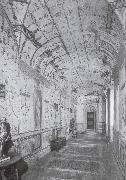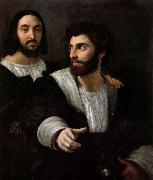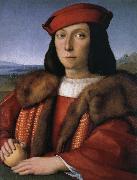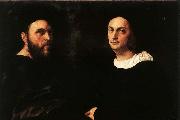
|
Artists
Index
|
||
|
RAFFAELLO Sanzio
|
||
|
Construction new20/RAFFAELLO Sanzio-962945.jpg ID de tableau:: 55723 |
mk243 | |
| |
|
|
|
|
||
|
Barr reaches Saar Kasi the Leo portrait new20/RAFFAELLO Sanzio-637292.jpg ID de tableau:: 57239 |
mk255 for in the years 1514-1515 canvas 0.82 x 0.67 meters. Paris Louvre | |
| |
|
|
|
|
||
|
Together with a friend of a self-portrait new20/RAFFAELLO Sanzio-979868.jpg ID de tableau:: 57240 |
mk255 for in 1519. 0.99 x 0.83 meters canvas. Paris Louvre | |
| |
|
|
|
|
||
|
Roveredo portrait new20/RAFFAELLO Sanzio-565799.jpg ID de tableau:: 58340 |
mk261 Florence about 1504 oil painting of wood 47.3 x 35.3 cm | |
| |
|
|
|
|
||
|
Double Portrait new21/RAFFAELLO Sanzio-727543.jpg ID de tableau:: 62373 |
77 x 111 cm Galleria Doria Pamphilj, Rome This austere double portrait of great stylistic restraint, set against a green background, in which the two figures, perhaps intentionally conceived by the artist in the manner of Roman busts, seem not to communicate with one another, has never roused a great deal of enthusiasm on the part of critics. In fact, no one has ever seriously studied of this painting and, even though it is now almost universally agreed to be the work of Raphael, the identity of the two figures has remained highly debatable. Some have seen them as Luther and Calvin (Pamphilj inventory of circa 1684), or as Bartolo da Sassoferrato and Baldo degli Ubaldi, two fourteenth-century jurists (inventory of Olimpia Aldobrandini ante 1665), or as Andrea Doria and Christopher Columbus, an interesting idea, or finally, as Andrea Navagero and Agostino Beaziano, a highly plausible identification that has been accepted by the most recent literature. We know from a letter written by Pietro Bembo on April 3, 1516, to Cardinal Bibbiena, that Raphael, Castiglione, Navagero and Beaziano had planned to make a trip to Tivoli together the following day. It is likely that the artist intended to paint a dual portrait of the two men: Andrea Navagero (1453-1529; humanist and man of letters, since 1515 librarian of St Mark's, who left Rome at the end of April for Venice, so his portrait would have to have been finished before his departure) and Agostino Beaziano (born in Treviso around the last decade of the fifteenth century and died in 1549, he started on a career in diplomacy through the intercession of Bembo, who took him around so that he could establish links with the most famous personages on the Roman scene). It is also likely that the painting was intended for their common friend Bembo, and it is in fact recorded as belonging to him in 1538, when he gave it to the surviving member of the pair, Beaziano, begging him "to take care that [the two heads] do not get spoilt." These facts are confirmed by the contemporary Marcantonio Michiel, who adds that the double portrait was painted on panel. This has led some critics to reject the Doria Pamphilj picture, considering it to be a copy on canvas. Yet it is easy to eliminate this objection, given that the picture here, already listed in the collection of Cardinal Pietro Aldobrandini in 1603 (as "Two portraits both the work of Raffaelle Da Urbino," and thus without any reference to the identity of the figures), later passed into that of Olimpia Aldobrandini Pamphilj, where it was cited before 1665 as canvas applied to panel. The wooden support was later removed, leaving the work in its present state. It would seem therefore correct to identify this picture (of which there are two copies with separate portraits in the Prado) as the Portrait of Navagero and Beaziano, painted by Raphael in April 1516 as a mark of their friendship. However a degree of uncertainty must remain, especially with regard to the age of the figures, which appears to be greater than that of the two men at the time, about thirty-three and twenty-six, respectively. In addition, other portraits that are definitely of Andrea Navagero, such as the 1526 one by Titian's school in Berlin or the one in a Roman collection, raise further doubts about the identification. The difficulties in judging similarities of appearance are well known, especially where historical personages are concerned. So the problem of Raphael's Double Portrait in the Galleria Doria Pamphilj remains unsolved | |
| |
|
|
|
|
||
| Artiste précédent Artiste prochain | ||
|
Also Buy::. For Following Paintings / Artists / Products, Please Use Our Search Online: |










